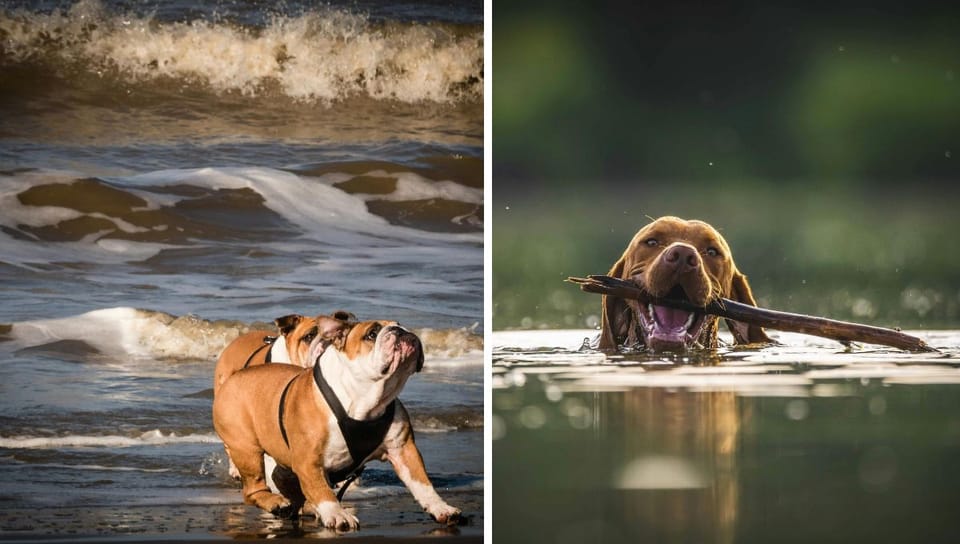Doggy Paddle: A Guide to Keeping Your Pooch Safe Around Water

Key Takeaways:
- Invest in a Quality Dog Life Jacket: Ensure your dog wears a life jacket to prevent drowning and provide buoyancy.
- Supervise Your Dog at All Times: Always keep an eye on your dog when near water to prevent accidents.
- Teach Your Dog to Swim: Gradually introduce your dog to water and teach them swimming skills for safety.
Understanding the Risks
Water can be a double-edged sword for dogs. While many dogs love to splash around, water can pose significant dangers. Drowning is a real risk, especially for dogs that are not strong swimmers. Even if your dog is a natural swimmer, unexpected currents or fatigue can lead to dangerous situations. Additionally, water can hide hazards like sharp objects, toxic algae, or even dangerous wildlife.
Another risk is hypothermia. Dogs can get cold quickly, especially in colder waters. This can lead to a drop in body temperature, which can be life-threatening if not addressed promptly. It's crucial to be aware of these risks and take proactive steps to ensure your dog's safety around water.
Invest in a Quality Dog Life Jacket
One of the best ways to keep your dog safe around water is to invest in a quality dog life jacket. These jackets are designed to provide buoyancy, helping your dog stay afloat even if they get tired or caught in a current. Look for a life jacket with a snug fit, adjustable straps, and a handle on the back for easy lifting.
Dog life jackets come in various sizes and styles, so it's essential to choose one that fits your dog's size and swimming ability. A well-fitted life jacket can make a significant difference in an emergency, giving you peace of mind while your dog enjoys the water.
Supervise Your Dog at All Times
Supervision is key when it comes to keeping your dog safe around water. Never leave your dog unattended near water, whether it's a pool, lake, or ocean. Even if your dog is a strong swimmer, accidents can happen in the blink of an eye. Always keep an eye on your dog and be ready to intervene if necessary.
It's also important to set boundaries. If you're at the beach or a lake, establish a safe area where your dog can play and swim. Keep them away from strong currents, deep water, and areas with potential hazards. By supervising your dog and setting clear boundaries, you can prevent accidents and ensure a fun, safe experience for your furry friend.
Teach Your Dog to Swim
Teaching your dog to swim can be a lifesaver. Start by introducing your dog to water gradually. Let them get used to the sensation of being in the water before encouraging them to swim. Use positive reinforcement, such as treats and praise, to make the experience enjoyable for your dog.
Once your dog is comfortable in the water, you can start teaching them basic swimming skills. Encourage them to paddle with their front legs and kick with their back legs. You can also use a dog life jacket to provide extra buoyancy and support. With patience and practice, your dog can become a confident swimmer, reducing the risk of accidents.
Be Aware of Water Conditions
Water conditions can change rapidly, and it's essential to be aware of them to keep your dog safe. Check the weather forecast before heading out and avoid taking your dog to the water during storms or high winds. Be mindful of tides and currents, especially if you're at the beach. Strong currents can quickly sweep your dog away, even if they're a strong swimmer.
Additionally, be cautious of water quality. Algae blooms, pollution, and other contaminants can pose serious health risks to your dog. If the water looks murky or has a strange odour, keeping your dog out of it is best. Always prioritize your dog's safety by being aware of the water conditions and making informed decisions.
Summary
Keeping your dog safe around water requires a combination of preparation, supervision, and awareness. By investing in a quality dog life jacket, supervising your dog at all times, teaching them to swim, and being aware of water conditions, you can ensure a safe and enjoyable experience for your furry friend. Remember, water safety is not just about preventing accidents but also about creating positive and fun experiences for your dog.
FAQ
1. Do all dogs need a life jacket?
While not all dogs need a life jacket, it's highly recommended for dogs that are not strong swimmers, are small or elderly, or will be in deep or rough waters. A life jacket provides extra buoyancy and can be a lifesaver in emergencies.
2. How can I tell if my dog is cold in the water?
Signs that your dog may be cold include shivering, whining, or trying to get out of the water. If you notice any of these signs, it's best to get your dog out of the water and dry them off immediately to prevent hypothermia.
3. What should I do if my dog swallows water while swimming?
If your dog swallows a small amount of water, they may cough or gag but should recover quickly. However, if they swallow a large amount of water, it can lead to water intoxication, which is a medical emergency. Symptoms include lethargy, vomiting, and difficulty breathing. If you suspect water intoxication, seek veterinary care immediately.
